Description
The Azure Damsel, Chrysiptera hemicyanea, is a dazzling reef fish known for its vibrant blue colouration. With a maximum size of around 3 inches (7.6 cm), this species showcases a slender and elongated body shape. Its entire body is adorned in a brilliant shade of blue, radiating a captivating shimmer under the light. The Azure Damsel’s iridescent scales reflect the colours of the surrounding coral reef, creating a mesmerizing sight.
Natural Habitat: A Lively Coral Wonderland
In its natural habitat, the Azure Damsel can be found inhabiting lively coral reefs. These reefs are teeming with life and colour, featuring a diverse array of corals, sponges, and other marine organisms. The Azure Damsel weaves effortlessly through the intricate coral formations, seeking shelter and feeding on small invertebrates amidst the vibrant reef environment. The crystal-clear waters provide the perfect backdrop for this stunning species.
Keeping Azure Damsel Healthy: Easy Care Level
The Azure Damsel is known for its hardiness and adaptability, making it an ideal choice for beginner hobbyists. It has an easy care level and is relatively simple to keep healthy in a well-maintained aquarium. Providing stable water conditions with a temperature range of 72-78°F (22-26°C) and a pH level between 8.1 and 8.4 is important for their well-being. Regular water changes and monitoring of ammonia, nitrate, and nitrite levels are necessary to maintain optimal water quality.
Special Requirements and Feeding:
The Azure Damsel is an omnivorous species, feeding on a varied diet. In captivity, they can be fed a combination of high-quality marine flakes, frozen foods such as brine shrimp and mysis shrimp, and live foods like copepods and small worms. Offering a balanced diet that includes both meaty and plant-based foods ensure their nutritional needs are met. Regular feeding, typically once or twice a day, is recommended.
How Many Should I Keep?
Due to their territorial nature, it is best to keep a single Azure Damsel in a tank. They tend to exhibit aggressive behaviour towards their own species and similar-looking fish. A tank size of at least 20 gallons (75 litres) is sufficient to accommodate a single Azure Damsel comfortably. Providing hiding spots and ample swimming space will help them establish territories and reduce stress.
Lighting Preference.
The Azure Damsel thrives in aquariums with adequate lighting. Mimicking natural sunlight conditions using full-spectrum reef lighting systems is recommended. This not only enhances the aesthetic appeal of the fish and its environment but also supports the growth of photosynthetic organisms, such as corals and algae, which contribute to a healthier ecosystem.
Suitable Tank Mates.
When selecting tank mates for the Azure Damsel, it is crucial to choose peaceful and compatible species. Suitable companions include other peaceful damselfish, small reef-safe fish, and invertebrates. Avoid keeping them with aggressive or territorial species that may disrupt their peaceful nature.
Reproduction in the Wild.
In the wild, the reproductive behaviour of the Azure Damsel involves complex rituals. Males establish territories and court females by performing displays, vibrating their bodies, and engaging in fin flaring. Once courtship is successful, the female lays adhesive eggs on a suitable substrate, usually a rocky surface or coral branch. The male then fertilizes the eggs externally.
Breeding Chrysiptera hemicyanea:
Breeding the Azure Damsel in captivity can be challenging and is typically carried out by experienced aquarists. It requires a separate breeding tank with appropriate conditions. The tank should mimic the natural environment, providing ample hiding spots and suitable surfaces for egg deposition.
- Courtship
Introducing a bonded pair that has exhibited courtship behaviour is crucial. The female will deposit her adhesive eggs on the chosen substrate, and the male will follow to fertilize them. Once the eggs are fertilized, it is important to remove the parents from the breeding tank to prevent them from consuming the eggs.
- Rearing
The eggs typically hatch within a few days, and the larvae emerge. Rearing the larvae is a delicate task, as they require specific environmental conditions and a specialized diet. Infusoria, rotifers, and finely powdered dry food can be provided as initial food sources, gradually transitioning to copepods and larger food particles as they grow.
Maintaining stable water parameters, closely monitoring ammonia and nitrate levels, and providing appropriate filtration are essential for the successful development of the larvae.
Sexual Dimorphism: Minimal Differences
The Azure Damsel exhibits minimal sexual dimorphism, with males and females appearing very similar in appearance. It is challenging to visually distinguish between the sexes based solely on physical characteristics.
Distribution: Origin and Captive Bred Lines
The Azure Damsel, Chrysiptera hemicyanea, is native to the tropical Indo-Pacific region, including areas such as the Great Barrier Reef, the Coral Sea, and various islands in the Pacific Ocean. These vibrant coral reef ecosystems serve as its natural habitat.
In the aquarium trade, there are instances where Azure Damsel specimens are referred to as captive bred or line bred strains. This indicates that these individuals are offspring of fish that have been successfully bred and raised in captivity. However, it is important to note that the original fish used to establish these captive bred lines originate from their native range in the Indo-Pacific.
Summary
The Azure Damsel, Chrysiptera hemicyanea, is a dazzling reef fish known for its vibrant blue colouration. With a maximum size of around 3 inches (7.6 cm), it adds a splash of vibrant blue to any aquarium. This species is relatively easy to care for, with specific requirements for water parameters, diet, and tank mates. Breeding the Azure Damsel requires specialized conditions and experienced aquarists. Whether observed in its natural habitat or admired in an aquarium, the Azure Damsel enchants with its brilliant blue hues and lively presence, embodying the beauty and diversity of the coral reef ecosystem.
The Fish pictured here are representative only and the livestock you receive may vary in pattern, coloration, and shape.

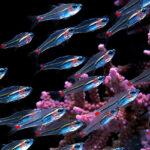

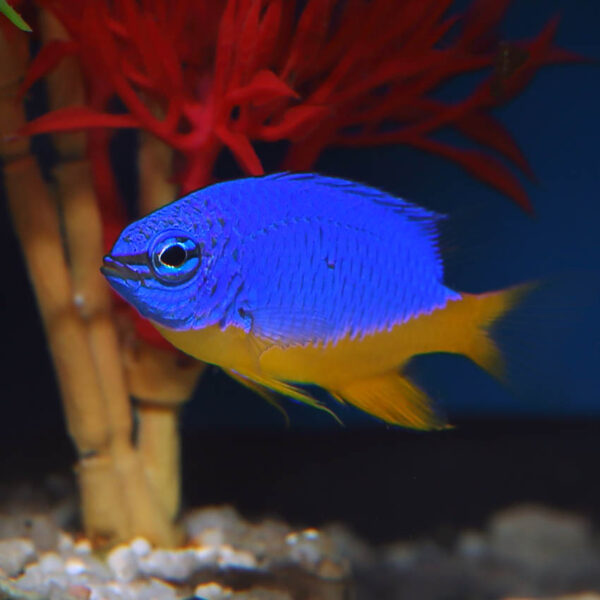

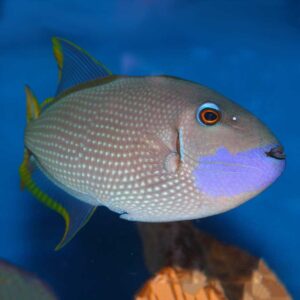

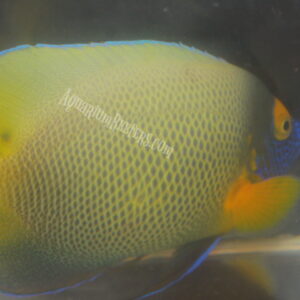
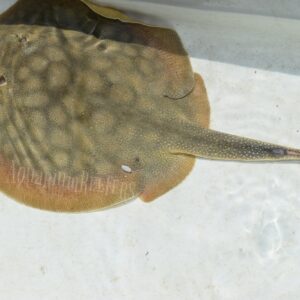
Reviews
There are no reviews yet.